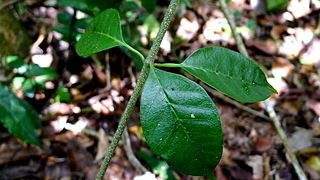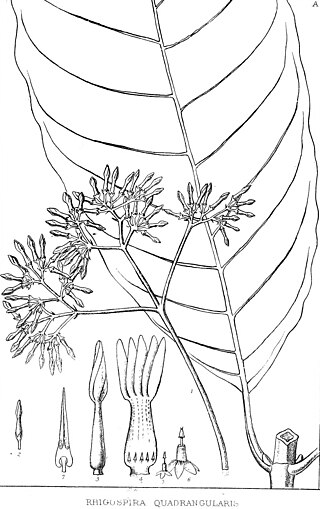| Skytanthus | |
|---|---|
 | |
| Skytanthus acutus | |
| Scientific classification | |
| Kingdom: | Plantae |
| Clade: | Tracheophytes |
| Clade: | Angiosperms |
| Clade: | Eudicots |
| Clade: | Asterids |
| Order: | Gentianales |
| Family: | Apocynaceae |
| Subfamily: | Rauvolfioideae |
| Tribe: | Plumerieae |
| Subtribe: | Thevetiinae |
| Genus: | Skytanthus Meyen |
| Synonyms [1] | |
| |

Skytanthus is a genus of flowering plants in the family Apocynaceae, first described in 1834. It is native to Brazil and Chile in South America. [1]
- Species [1]
- Skytanthus acutus Meyen - from Antofagasta to Coquimbo in N + C Chile
- Skytanthus hancorniifolius (A.DC.) Miers - E Brazil
- Skytanthus martianus (Müll.Arg.) Miers - Bahia + Minas Gerais in Brazil
- Formerly placed in this genus [1]
- Skytanthus havanensis(Müll.Arg.) Miers = Cameraria latifolia L.











